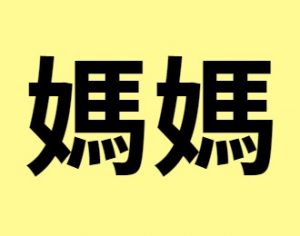The Difference between Traditional and Simplified Chinese
For every Chinese beginner, one of the most important choices is whether to learn Traditional or Simplified Chinese. Although they both belong to the same spoken language, the two are different in appearance and their practical usage.
-
What are Traditional and Simplified Chinese?
In 1949, a new ‘simplified’ writing system was officially adopted by China, and over the next few decades, it was incorporated into the school systems and in the distribution of documents. Today, it is the standard writing system for over one billion Chinese citizens.
Why was the Traditional Chinese writing system replaced in modern China? With over 50,000 characters in its lexical inventory, the practice of simplifying the writing system is far from unprecedented. Different versions and interpretations of the Chinese script have been circulated unofficially for years. Then, in 1949 when The People’s Republic of China was established, an initiative was put in place to develop an official, simplified writing system.
The goal was to make reading and writing more accessible to a largely illiterate population. Chinese linguists worked in partnership with the government to simplify approximately 2,000 Chinese characters.
-
Differences in Appearance
Simplified Chinese, as the name indicates, simplifies each character, so they are easier to write and memorize. Traditional Chinese, on the contrary, keeps the original forms that have evolved over the course of a thousand years. Therefore, it is easier for people who understand Traditional Chinese to pick up Simplified Chinese, but it will be more difficult for people who understand Simplified Chinese to learn Traditional Chinese. Some examples include:

Mama-Traditional Chinese

Mama-Simplified Chinese
As you can see, the left half of the character is the same, but the right half has removed a couple of horizontal strokes and combined the 4 small strokes at the bottom into a line. At its core, simplified Chinese is a simplification of the traditional Chinese alphabet. This simplification is accomplished in two ways: stroke reduction and merged characters.
-
Where is Each Used?
Today, simplified Chinese is officially used in mainland China and Singapore, and it is also used by the Chinese community in Malaysia. Traditional Chinese is used in Taiwan, Hong Kong, and Macau.
Simplified Chinese is the standard script for residents of mainland China—some 1.43 billion people. A small subset of this population—mostly older generations—can still understand and write Traditional Chinese.
For traditional Chinese, there are two officially-recognized varieties: Traditional Chinese for Hong Kong SAR and Traditional Chinese for Taiwan. The differences between the two are more nuanced than those between Simplified and Traditional Chinese.
-
Which Should I Learn?
For new beginners, simplified Chinese is easier to learn because the characters are simple and clear for people to recognize, especially for little kids. There are clear shapes and fewer strokes to write. However, for adults who might have business connections in Hong Kong and Taiwan, traditional Chinese is more practical to study.
All in all, the two are not contradictory, instead, they can complement each other. Simplified is good for people to use in daily life while Traditional (which more closely resembles the Oracle bone script) is interesting for adults who enjoy reading historical documents.
If your child is going to learn Chinese, Simplified Chinese is a great place to start. Sign up on Lingo Bus today; book class and don’t miss out on our Black Friday savings!

